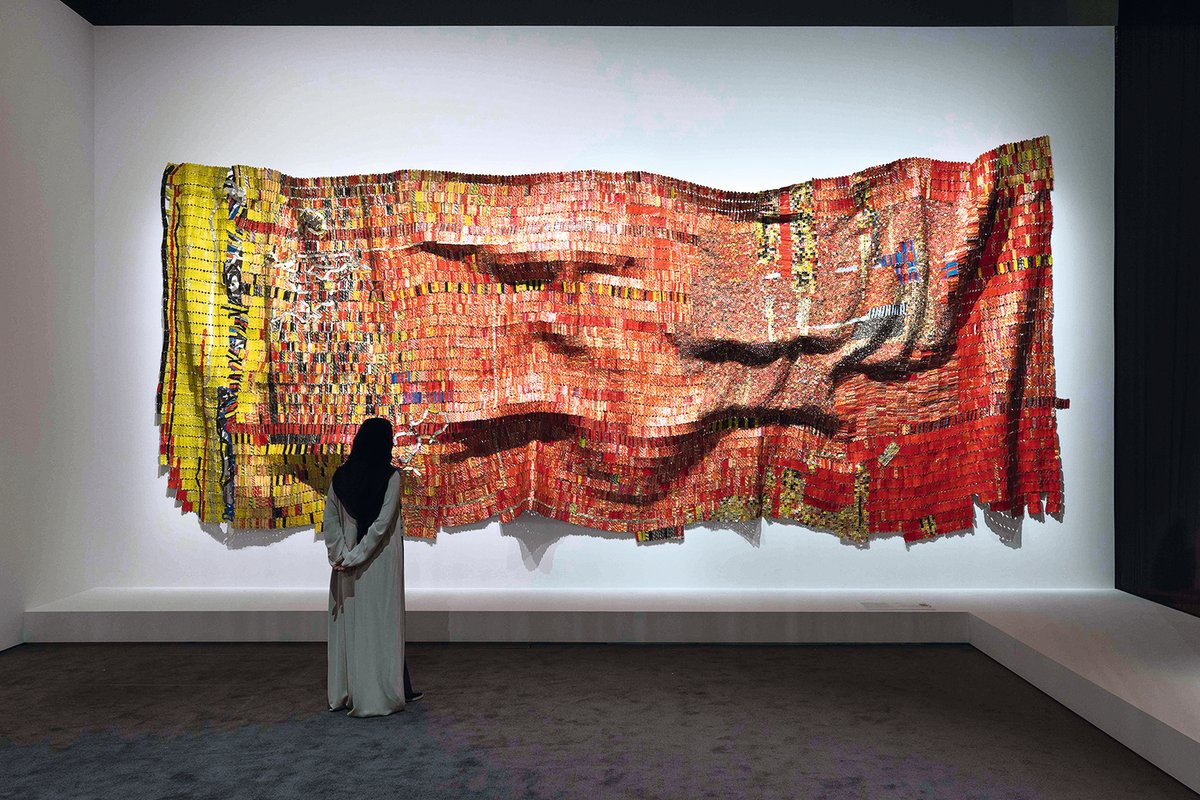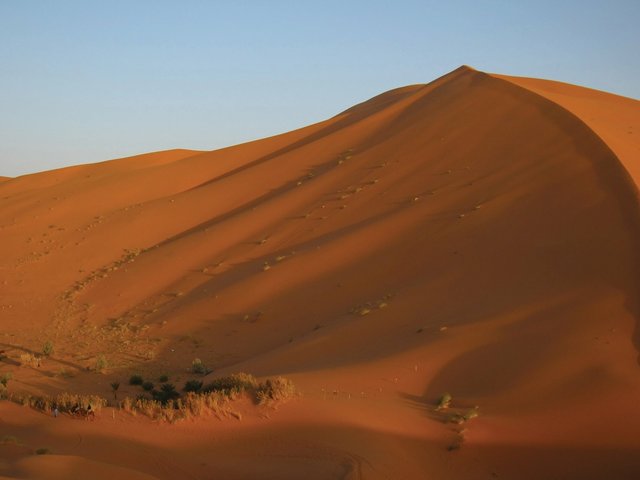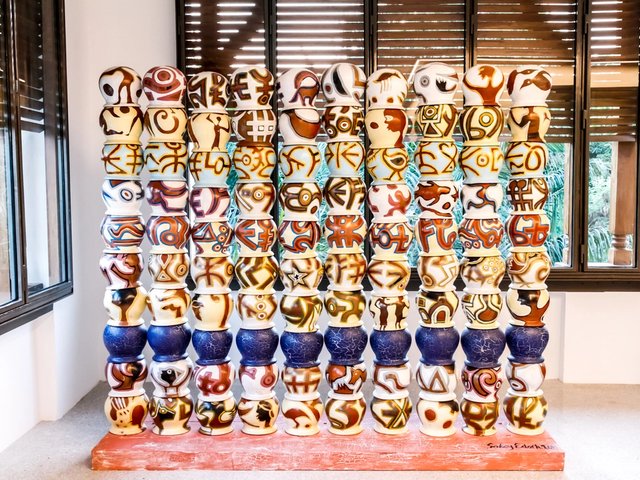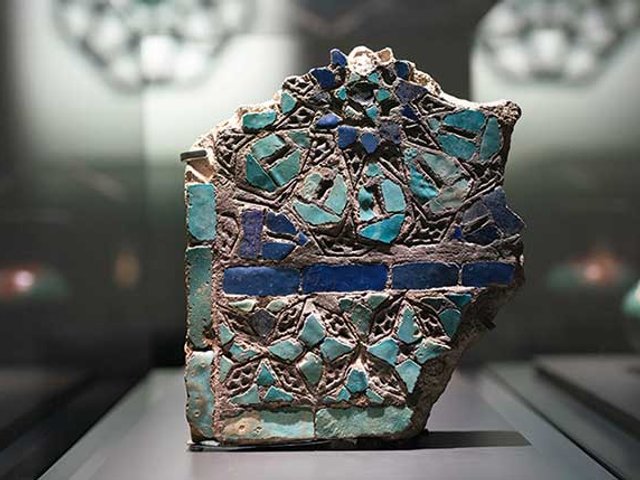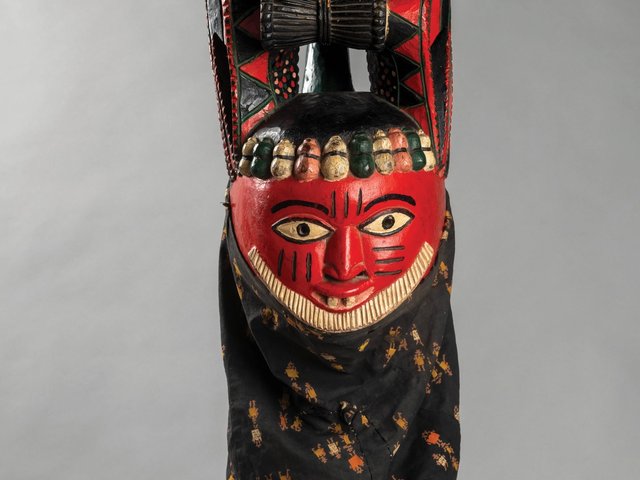Kings and Queens of Africa: Forms and Figures of Power
Louvre Abu Dhabi, Until 25 May
This exhibition claims to be the first major show of Sub-Saharan African art in the Middle East. With more than 300 objects, it is certainly wide in scope, covering multiple cultures and a millennium of history. All the exhibits are connected to the continent’s rulers, including royal attire, royal portraits, sculptures and ceremonial objects.
The show is split into three sections each exploring different regions: West Africa, including Ife, Benin and Dahomey; Central Africa showcasing the kingdoms of Kongo, Luba and Teke; and Southern and Eastern Africa, which celebrate the Zulu and Ethiopian cultures. It concludes with a section on contemporary popular art such as comics and video games.
The exhibition is careful to acknowledge the histories of how the objects came into museum collections. With many of the exhibits coming from France’s Musée du Quai Branly-Jacques Chirac, there are links to the European colonisation and looting of Africa during the 19th and 20th centuries. But the exhibition is also keen to highlight the alternative routes the objects have taken: for example, a gilded wooden stool—used as a throne by the Akan people—was given as a diplomatic gift to the French from the president of Côte d’Ivoire.
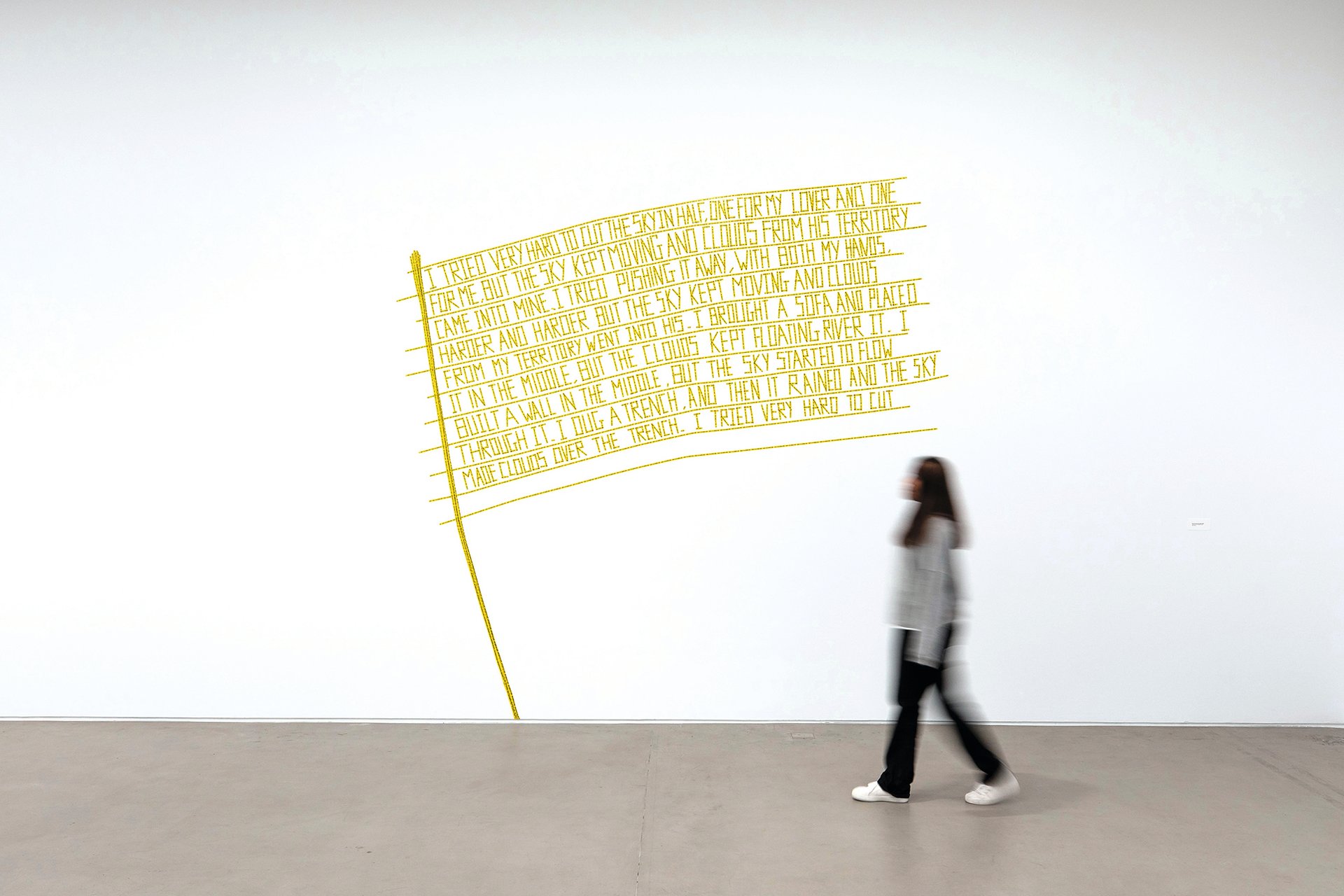
In the text-based work There is No Border Here (2005-06), on show at the Ishara Art Foundation, Shilpa Gupta addresses the borders between countries and people, and within individuals Photo: Ismail Noor/Seeing Things; courtesy of Ishara Art Foundation and the artist
Shilpa Gupta: Lines of Flight
Ishara Art Foundation, until 31 May
The exhibition of works by the Indian artist Shilpa Gupta at Ishara Art Foundation is highly topical, says the show’s curator Sabih Ahmed. The exhibition, which includes site-specific interventions, sculptures, drawings, prints and videos dating from 2006 to today, demonstrates how Gupta is “deeply committed to voices of emancipation that transcend borders, imposed silences and conventions”, Ahmed says. “These concerns are deeply relevant to our current historical moment, when so many countries are interested in fortifying borders to restrict people’s movement.”
The featured works explore how Gupta has explored lines and linear forms, taking “something as seemingly innocuous and ordinary as a line and transforming it from an aesthetic or artistic form to a social and cultural instrument”, Ahmed says. Key works in the show include There is No Border Here (2005-06), a wall drawing made from self-adhesive tape in the shape of a flag.
Recent pieces include Listening Air (2019-22), which merges text and sculpture. “The work comprises five suspended microphones, each counterbalanced by a dim light fixture that orbits around the darkened gallery between visitors,” Ahmed says. “Upturning their function, the microphones serve as speakers reciting poetry that has travelled vast distances.” Works recited include a poem by Faiz Ahmed Faiz of Pakistan, We Shall See (1979), which became a protest anthem sung in university campuses across India.

A photo of Miles Greenberg’s performance of Le Miroir at the El Badi Palace in Marrakech Photo: Louise Gholam
Miles Greenberg: Le Miroir
ICD Brookfield Place, 16 April-18 May
The performance artist Miles Greenberg will première a new multi-channel film project during Art Dubai. Le Miroir explores emotional transformations, self-confrontation and human duality.
A live performance of Le Miroir took place during the 1-54 contemporary African art fair in Marrakech in January at the ancient El Badi Palace, where Greenberg and a team of performers stood on silver plinths surrounded by water for hours in front of an audience. For the second iteration, three days later, Greenberg filmed a performance in the UAE desert. He sees part two loosely as an interpretation of crossing a desert, he says.
“This feels more like cinema than anything I’ve done before,” Greenberg tells The Art Newspaper. “No matter what I do, whether it’s a performance, a film, an installation or a sculpture, I try to treat every object I work with as a body so it feels analogous.”
The project was broadly inspired by Andrei Tarkovsky’s 1975 film Mirror, about a dying Soviet-era poet’s memories of his life, presented out of chronological order. “It’s an abstract and extremely personal work, and I don’t think it meant the same to him as it meant to anybody who saw it,” Greenberg says. “It gains meaning as you watch it, depending on your own state of being… I think that a lot of my work does that.”


